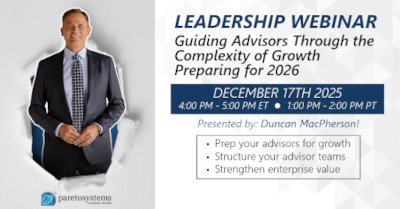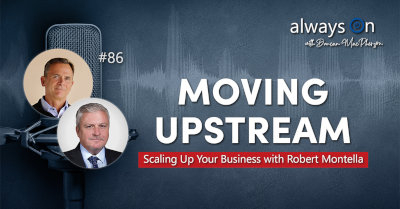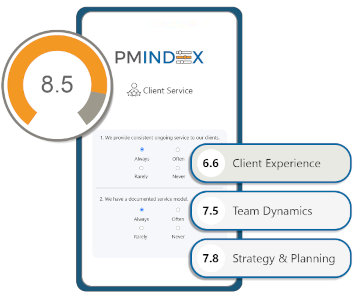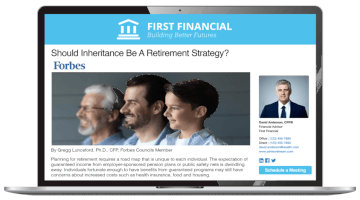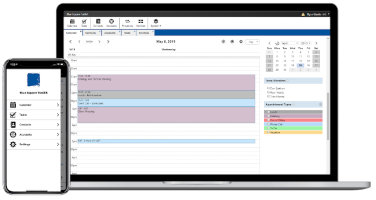Strategic Planning - Analyze Your Gaps

Controlling the Controllable
Market volatility, political uncertainty, competitive forces and various external dependencies are facts of life for a knowledge-for-profit professional.
It would be great if the world cooperated with our plans on a consistent basis, but that is not the way it is. Let’s face it; that’s why clients hire you. Friction and uncertainty come with the territory. Your ability to deal with this reality is a major factor that separates the best from the rest.
Strategic planning is the first step in focusing that ability. In many ways, strategic planning acts like the noise-canceling headphones I talked about earlier. As with your clients, there is a sea of noise competing for your attention, and the velocity and volume increases every year. A strategic planning process lets you tune out the static and improve the signal-to-noise ratio. This ensures that you focus on what matters - the things you have control over and that have real importance - so you can move in the direction of your vision for the future, relying less on hope and more on process. It gives you the guide you need to begin constructing something of greater value.
I’ll come back to the jigsaw analogy: Have you ever tried to assemble a jigsaw puzzle without the picture as a reference to guide you? It can be done through trial and error, but it takes far longer and is far more frustrating without a frame of reference. A personalized strategic plan serves as your guide as you put the pieces of both life and business together.
A strategic plan can help you make critical observations about the track you are on, based on the Law of Cause and Effect, to ensure that you’re engaged in the activities that contribute to your productivity goals. It can help you identify untapped opportunities and overlooked vulnerabilities, so you take action accordingly.
The key is to apply a process, and not go through that process in isolation. My approach to strategic planning is driven in large part by the gap analysis I discussed. Rather than a generic pep-talk that tells someone what they should be doing and has temporary value, I use a Socratic approach, asking a series of questions that act as a strategic analysis and a path to discovery and self-motivation. I’ve had countless exchanges with professionals over the years where our process leads them to their own conclusions about what really matters and how to make it all a reality.
As an example, I was speaking with a professional advisor recently as part of a strategic planning conversation. We were deep into a conversation on business development, client acquisition and on-boarding when we reached the following sequence of simple questions.
“Do your clients fully understand and appreciate your value?” I asked.
After a long pause, he replied with a tentative, “I think they do.”
I then asked him, “How do your clients describe you?”
“I have no idea, really. They probably say they trust and believe in me,” he said.
“What is your process to make your clients the voice you listen to in order to get the pulse on the effectiveness of your communications?” I asked.
To which he replied, “I don’t have one.”
It is common for professionals from all walks of life to drift into a pattern of sporadic client communication and assume that all is well - part of that inertia confidence I mentioned. While their approach isn’t necessarily bad per se, it certainly isn’t firing on all cylinders.
In the scenario I described, I brought the conversation to the tipping point a few questions later by asking about the advisor’s approach to on-boarding new clients. He proceeded to outline his method, which was fine, but which had several gaps. I then asked him why he did things the way he did, to which he replied, “That’s basically the way we’ve always done it.”
It is essential that you constantly scrutinize your procedures in order to optimize and refine how you do things. There is a place for the “if it ain’t broke, don’t fix it” mantra, but when it comes to communication - especially as it relates to competitor-proofing clients, gaining their full empowerment as the relationship unfolds, and new client acquisition through referrals - you can’t take anything for granted.
You must continually strive to raise the bar, and to do that you need to know where you stand.
The advisor I just described is a classic example of someone with significant mileage and experience whose efforts compounded over time, but had brought him to a plateau. In many ways he was mistaking movement for achievement. He didn’t need to repair any damage, and he definitely didn’t need to make any drastic wholesale changes or reinvent the wheel. He simply needed to make some minor adjustments.
It’s not an exact science but I’ve seen time and time again how very successful advisors have done 80 percent of the necessary work on their business, but are only realizing about 20 percent of the reward. A few simple refinements are all that were needed to unlock the full potential.
Continued Success!
Contributed by: Duncan MacPherson

